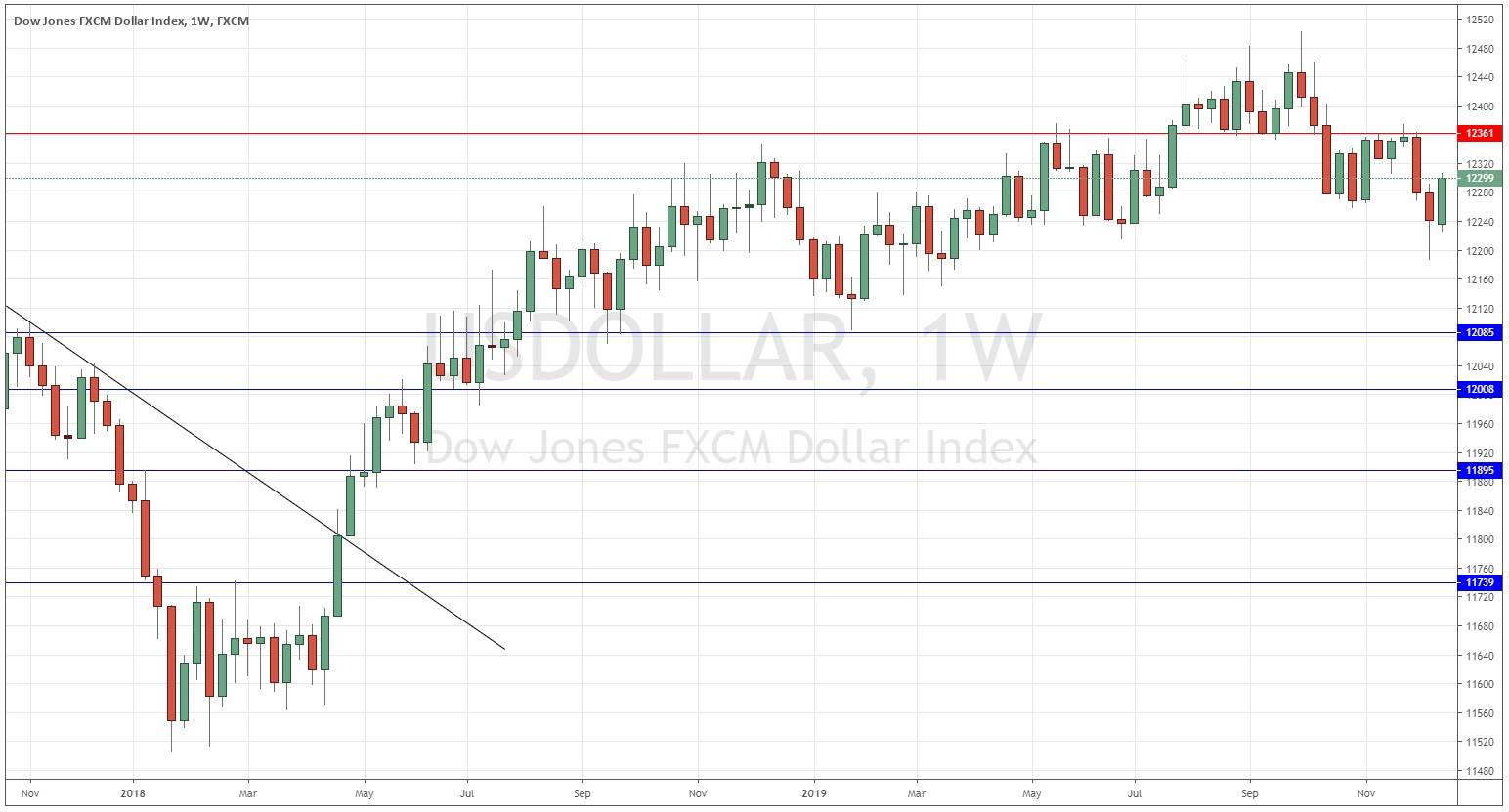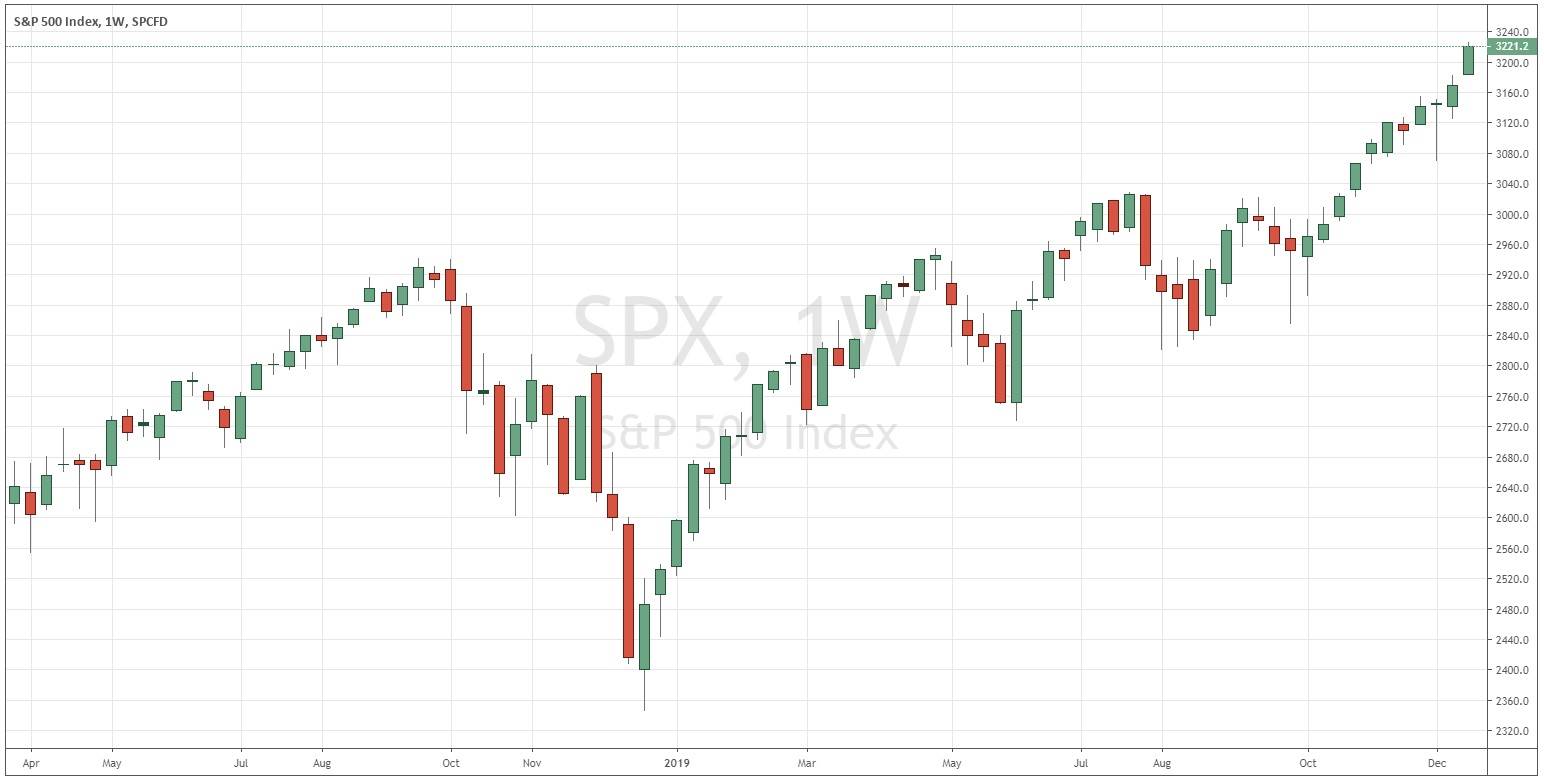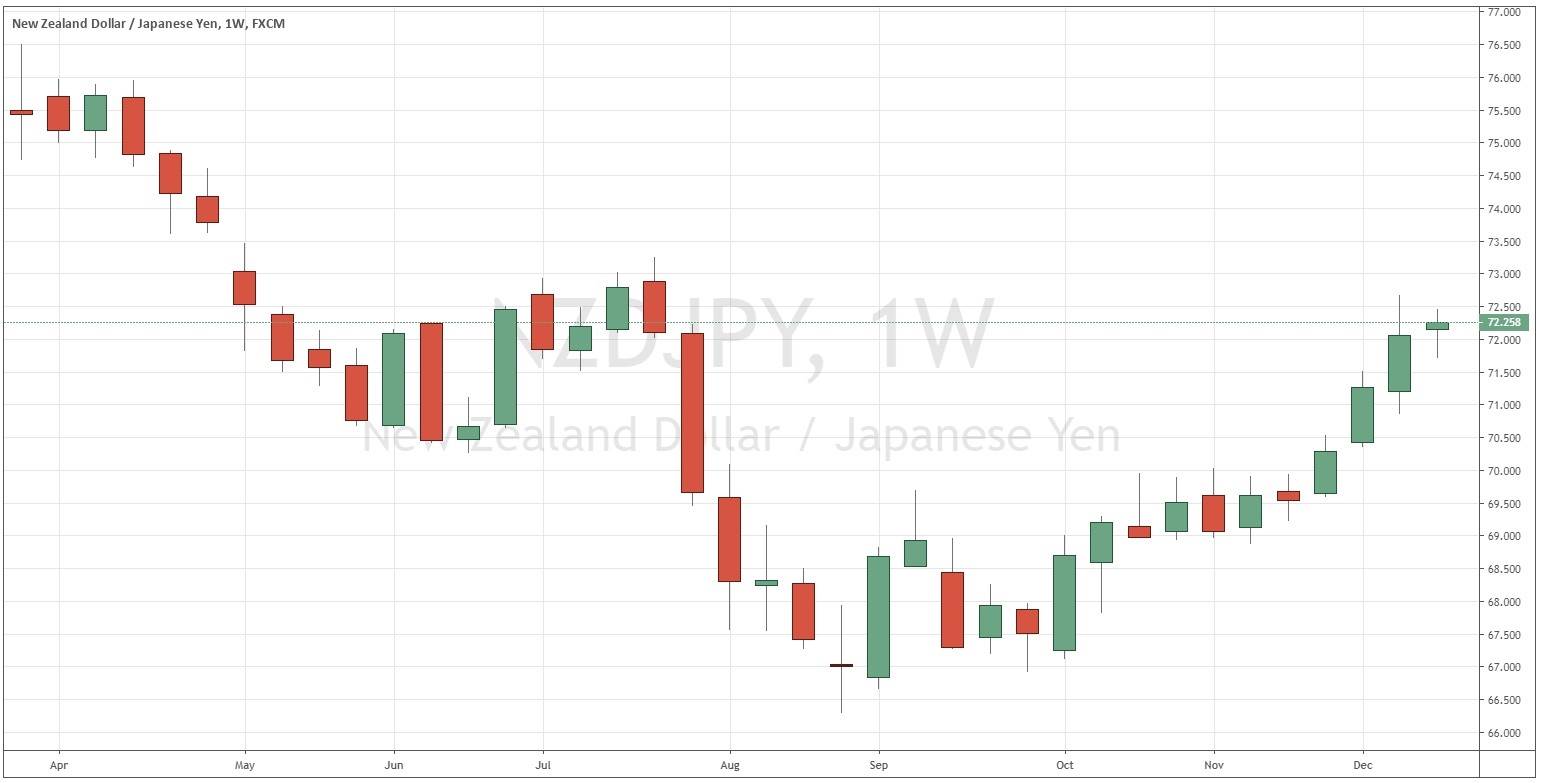The difference between success and failure in Forex trading is very likely to depend upon which currency pairs you choose to trade each week, and not on the exact trading methods you might use to determine trade entries and exits. Each week I am going to analyze fundamentals, sentiment and technical positions in order to determine which currency pairs are most likely to produce the easiest and most profitable trading opportunities over the next week. In some cases, it will be trading the trend. In other cases, it will be trading support and resistance levels during more ranging markets.
Big Picture 22nd December 2019
In my previous piece last week, I forecasted that the best trades were likely to be long of the S&P 500 Index following a daily (New York) close above 3170 and long of the GBP/USD currency pair following a daily (New York) close above 1.3329.
These were great calls, especially for the S&P 500 Index which closed at 3191.5 on Monday and then ended the week up by 0.93% from there. The GBP/USD currency pair made no daily closes above 1.3329 so this trade was not triggered.
Last week’s Forex market saw the strongest rise in the relative value of the Australian Dollar, and the strongest fall in the relative value of the British Pound.
Fundamental Analysis & Market Sentiment
Fundamental analysts are leaning in favor of the view that the recent quarter-point cut in the U.S. interest rate will be the last cut for a while, with Jerome Powell recently signaling there are likely to be no further cuts and maintaining an upbeat take on the U.S. economy.
The U.S. economy is still growing, but there are some fears of a pending recession. A major issue concerning sentiment on the U.S. and global economies is the trade dispute between the U.S. and China, although the situation has improved here as it seems that “Phase One” of a U.S. / China trade deal is about to be signed. The benchmark U.S. stock index, the S&P 500, again ended the week at an all-time weekly closing high price.
There are a few long-term trends in the Forex market, notably a bullish trend in the New Zealand Dollar and a bearish trend in the Japanese Yen. The Bank of Japan made no changes to its monetary policy last week despite increasing signs of a slowdown in the Japanese economy. The long-term bullish breakout made by the GBP/USD has seen a strong bearish snap-back as the British Government easily passed its new Brexit legislation, and markets are turning their attention to the terms of this fast Brexit scheduled for the end of January, just a few weeks away, and the potential damage it may cause to the British economy.
Technical Analysis
U.S. Dollar Index
The weekly price chart below shows last week printed a bullish engulfing candlestick, which closed very near the top of its price range. The price is below its level from 3 months ago but above its level from 6 months ago, which is mildly bearish but mixed. The price is still below the key resistance level at 12361. We have mostly bearish signs here, although they are mixed or weak, suggesting that next week’s action is unpredictable.
S&P 500 Index
The weekly price chart below shows that last week printed a bullish candlestick, which closed near its high and above all its weekly closing prices of all time. These are bullish signs, suggesting that the price is likely to rise further over the coming week.
NZD/JPY
The price of this currency cross made its highest weekly close in 5 months at the end of last week. The NZD has been boosted by its relatively high interest rate and the relatively hawkish bias of its central bank’s monetary policy. The Japanese Yen is weak, and the Bank of Japan is doing nothing to make it stronger. Crosses move less predictably than pairs, but I see scope for a further rise here, after the USD/JPY currency pair makes a daily close above 110.00.
Conclusion
This week I forecast the best trades are likely to be long of the S&P 500 Index following a daily (New York) close above 3222 and long of the NZD/JPY currency cross following a daily (New York) close of the USD/JPY currency pair above 110.00.



